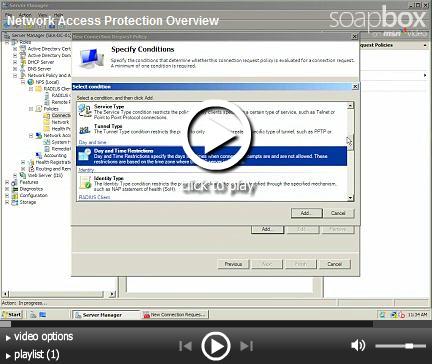Network Access Protection Overview
One of the most time-consuming challenges for administrators is ensuring that computers that connect to private networks are up to date and meet the preset health policy requirements. Enforcing requirements is even more difficult when the computers, such as home computers or traveling laptops, are not under the administrator’s direct control. Yet failure to keep computers that connect to the network up to date is one of the most common ways to jeopardize the integrity of a network. The Network Policy Server acts as a health policy server for managing these connected computers. We’re going to start today’s session with an overview of Network Policy Server architecture and examine its functionality.
Network Access Protection, or which I’ll refer to for the rest of the session as NAP, provides components that help administrators enforce compliance with health policies for network access or communication. We’ll see how to deploy and configure NAP.
Network Policy Servers are linchpins in an enterprise computer access system. It is important to monitor these servers, and maintain them for high availability. Here’s a brief overview of knowledge that will get you started with Network Access Protection.

